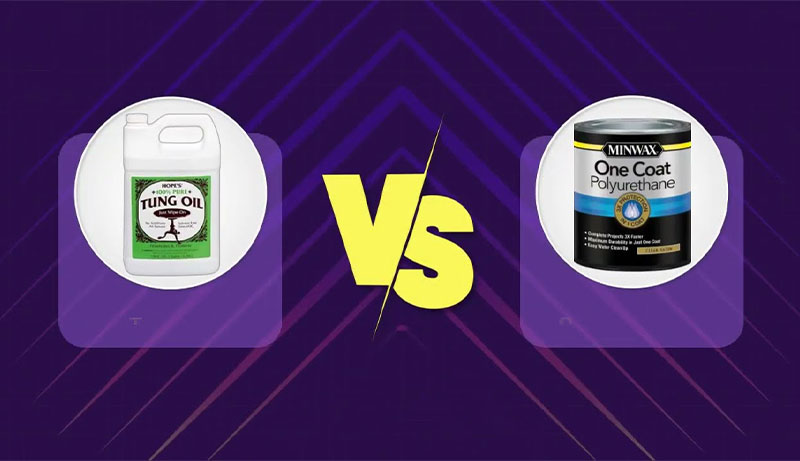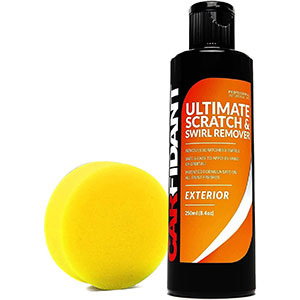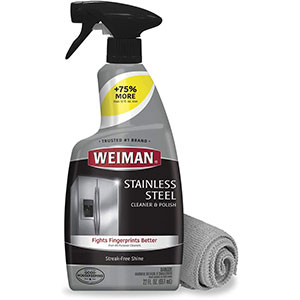As an affiliate, we may earn a commission from qualifying purchases. We get commissions for purchases made through links on this website from Amazon and other third parties.
Polyurethane and Tung oil are two of the most widely used products on the market for wood finishing. They both have unmatched benefits that can really help your wood.
However, Tung oil and poly are not interchangeable, and being aware of these distinctions will help you make the right decision for your projects.
When polyurethane dries, a strong protective film forms on the wood’s surface, shielding it from moisture, dings, and scratches. Tung oil, in contrast, absorbs into the wood while leaving part of it to form a thin film on the surface.
It provides some defense against moisture damage since it closes the wood pores. Let’s examine the comparison of polyurethane and tung oil now.
Tung Oil
The Tung tree, which is indigenous to China and South America, produces tung oil, a clear, all-natural drying oil. It has an amber hue that penetrates the pores of the wood and nourishes it while also enhancing the color of the wood.
Tung oil fills the pores in the wood, preventing moisture and water damage since it penetrates the pores and fills them.
The oil is a drying type, so it also leaves a thin coating on the surface of the wood, but this layer typically isn’t thick enough to shield the wood from dings and other physical impacts.
Pure Tung oil cures by reacting with oxygen, just like other drying oils. This procedure could take several days. Due to the necessity for 5 to 7 applications of Tung oil to provide the best protection, applying it to wood can be a time-consuming process.
To keep your furniture or other wooden things protected, you must also reapply Tung oil at least once a year. Tung oil may enhance the wood grain and bring out the character of your wood, giving it a lovely, polished appearance when used properly.
Polyurethane
A synthetic resin called polyurethane is made up of urethane compounds, resins, solvents, and chemicals. While urethane compounds are their main component, polyurethane is created by mixing these components in industrial processes.
Because urethanes are substances that resemble plastic and dry to form malleable, tough, and moisture-resistant materials, poly is sometimes referred to as liquid plastic.
Oil- or water-based polyurethane are also possible. Both varieties are transparent, though oil-based varieties frequently have a slight yellowing tint.
Polyurethane is frequently used as a sealer because it creates a durable coating. It can be used as a protective coating to surfaces of raw wood or dyed wood.
In addition to wood, polyurethane can attach to a few other surfaces, including metal, plastic, and concrete. It is adaptable and very practical because of this quality.
There are several different sheen levels for polyurethanes, including matte, satin, semi-gloss, and high gloss. Regardless of sheen, the material is strong and resilient, while less glossy sheens tend to conceal flaws better.
For a variety of reasons, polyurethane is a popular wood treatment. The key benefits and drawbacks of poly are listed below.
Conclusion
For your timber projects, polyurethane outperforms tung oil finish in the majority of categories.
In addition to being more resistant to dents, scratches, and moisture damage than Tung oil, it is also simpler to apply.
When your primary goal is to nurture the wood, keep its natural character, and emphasize its grain, Tung oil should be preferred to polyurethane.




